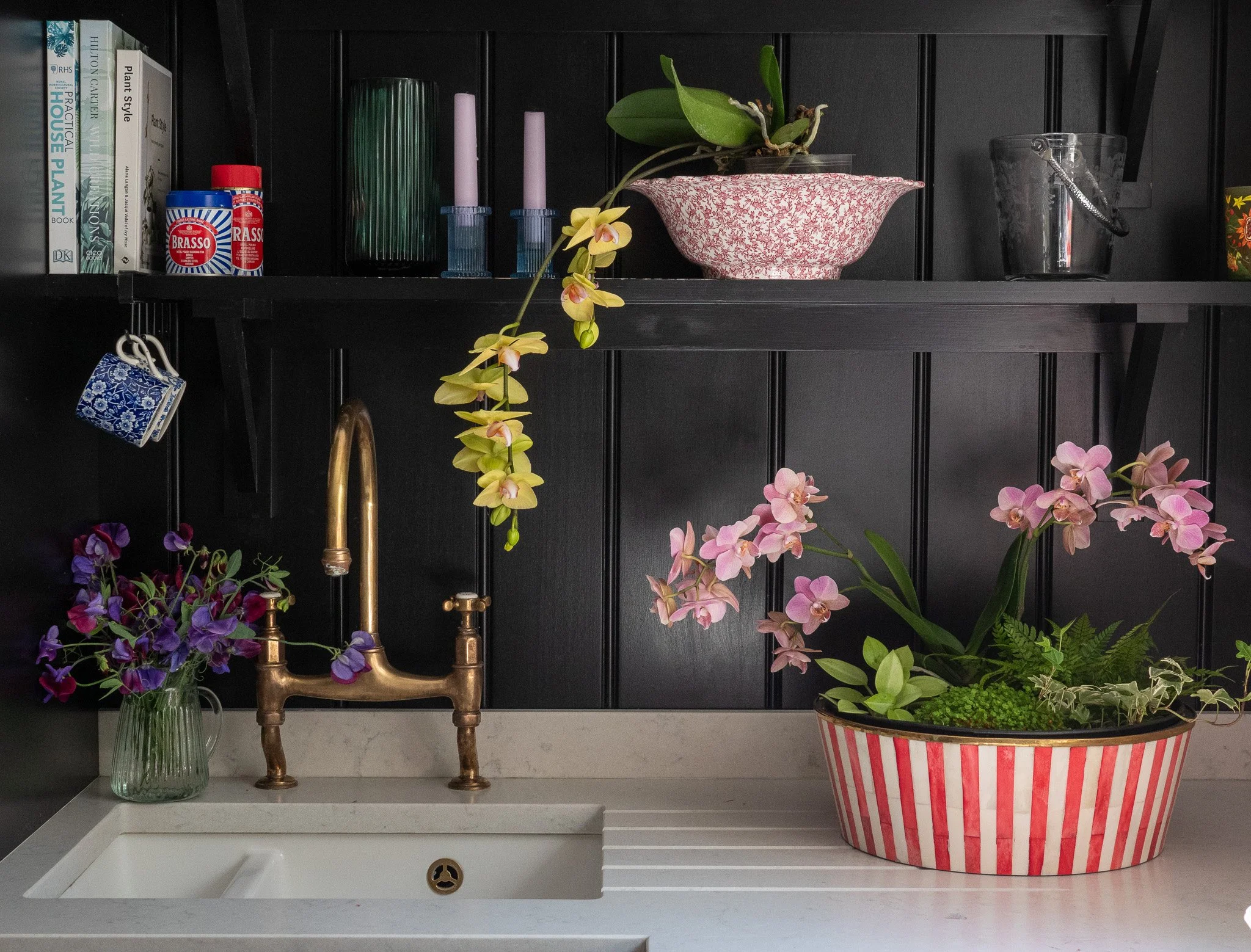Styling orchids
I hate to be *that guy* but I’ve always like houseplants, even before they were fashionable. Of course everyone’s a #plantparent now but I had a cheeseplant in my bedroom in 1992 when I was 14. Pretty ahead of the curve you see.
In the intervening 30-odd years I’ve had many houseplants - possibly hundreds - but I have never been interested in orchids. They were just never my style at all. Kind of fake-looking, a proxy for ‘opulence’ in interior design. When I thought of them I imagined poker straight stems, clipped to stakes with plastic claws, supporting big white waxy flowers in pristine rooms of shiny surfaces and shades of beige. Kind of tacky, if I’m being honest.
But three things have changed my mind this year. Firstly I saw them in the Maldives - one of their natural habitats - growing as hanging plants with their tangled roots exposed. Then I saw a picture on Insta of shop-bought orchids with their support stakes removed, and they looked so much better. And most recently I saw my aunt’s collection of older orchids - a whole host of different varieties which had flowered and re-flowered multiple times and seemed to be thriving on relative neglect, complementing her eclectic, arty living room perfectly.
So after a bit of experimentation, here are my key requirements for orchids that look less like plastic plants from a private dentist’s waiting room and more like the wild, exotic, colourful jungle blooms they actually are:
When you buy them, immediately remove their support and put them somewhere high where the stems can arch over the pot
Replace or cover the plastic pots with terracotta or vintage china
Display them grouped or hung in odd numbers, combining different colours, sizes and stages of blooming
You can put little ones in terrariums (but let them breathe)
Keep them somewhere bright and warm after flowering, remove the old flower spikes and don’t water them too much (you can add a couple of ice cubes to the pot every week or two instead of watering them to prevent any heavy-handedness with the watering can)


